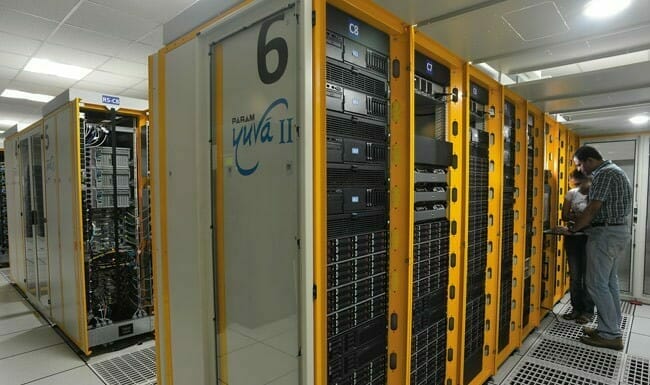Unlocking the Potential of Neuroeducation: Exploring the Fascinating Intersection of Neuroscience and Education
Neuroeducation, a groundbreaking field at the vibrant intersection of neuroscience and education, holds immense promise in revolutionizing how we learn and teach. With its energetic fusion of scientific discoveries from the brain science realm and innovative teaching methodologies, neuroeducation has the potential to unlock untapped abilities within students, transforming classrooms into dynamic spaces where knowledge acquisition is accelerated. As we embark on this captivating journey through the fascinating world of neuroeducation, let us explore how cutting-edge insights into the functioning of our brain can reshape educational practices for unparalleled academic growth and personal development.
The Neuroscience of Learning: Understanding the Brain’s Role in Education
Neuroeducation, the exciting merging of neuroscience and education, delves into understanding how the brain learns and applying this knowledge to enhance educational practices. Using advanced imaging techniques like functional magnetic resonance imaging (fMRI), researchers can now observe brain activity during learning tasks, offering valuable insights into cognitive processes.
- Brain plasticity:
- The brain’s incredible ability to change and adapt, known as neuroplasticity, is a key focus in neuroeducation.
- Through experience-dependent plasticity, repeated practice strengthens neural connections related to specific skills or knowledge.
- Neuroscientists have discovered that even well into adulthood, our brains retain the capacity for growth and rewiring.
- Emotions and motivation:
- Emotions play a crucial role in learning; they help consolidate memories by influencing what we pay attention to and how deeply we encode information.
- Positive emotions such as curiosity and interest enhance learning outcomes by increasing motivation and engagement.
- Conversely, stress or negative emotions can impair memory formation and hinder effective learning.
- Effective teaching strategies:
- Active learning:
- Engaging students in hands-on activities prompts them to use multiple areas of their brain simultaneously for enhanced retention.
- Multisensory instruction:
- Incorporating visual aids along with auditory cues helps students better process information by activating different regions of the brain simultaneously.
- Spacing effect:
- Instead of cramming before exams, spacing out study sessions over time enhances long-term retention through reinforcing neural pathways.
Understanding how our brains function during learning enables educators to optimize educational experiences for individual learners. By leveraging neuroeducation principles effectively, educators can unlock every student’s potential while designing dynamic classrooms that foster engaged learners.
Building Better Connections: The Impact of Neuroplasticity on Learning
Neuroplasticity, the brain’s incredible ability to change and adapt, plays a crucial role in learning. Through neuroplasticity, connections between neurons can be strengthened or weakened based on our experiences and interactions with the world around us.
- Brain rewiring: Neuroplasticity allows our brains to rewire themselves, forming new neural pathways as we learn new skills or knowledge.
- Experience-dependent plasticity: Our brains are constantly shaped by our experiences. Regular stimulation through challenging activities can enhance neural connections and optimize learning potential.
- Repetition matters: Repeated practice strengthens synaptic connections in the brain, making information easier to recall and skills more automatic.
Understanding how neuroplasticity impacts learning opens up exciting possibilities for education. By harnessing the principles of neuroeducation:
- Teachers can design instructional strategies that promote effective learning by incorporating repetition and active engagement.
- Students can actively participate in their own cognitive growth by engaging in deliberate practice, leading to improved retention of knowledge and better skill development.
- Schools can create environments that foster brain-friendly approaches to teaching, maximizing students’ potential for academic success.
By leveraging the power of neuroplasticity within educational settings, we have a unique opportunity to unlock each learner’s full potential.
Enhancing Memory and Recall: Strategies from the Neuroeducation Toolkit
Chunking information
One effective strategy for enhancing memory and recall is chunking information. Chunking involves breaking down large amounts of information into smaller, more manageable chunks. For example, instead of trying to memorize a long sequence of numbers, it’s easier to remember them when they are grouped into smaller sets. This technique allows the brain to process and store information more efficiently.
Spaced repetition
Another powerful tool in the neuroeducation toolkit is spaced repetition. This strategy involves reviewing material at increasing intervals over time to reinforce learning and improve long-term retention. By spacing out study sessions rather than cramming all at once, students can optimize their memory recall by allowing the brain ample time for consolidation and reinforcement.
Mnemonic devices
Using mnemonic devices is another proven approach to enhance memory and recall skills. Mnemonics are memorable techniques or associations that aid in remembering information. For example, using acronyms or rhymes can help students remember lists or facts more easily. By creating unique connections between new knowledge and existing memories, mnemonic devices provide mental hooks that make retrieval easier later on.
These strategies drawn from the neuroeducation toolkit offer valuable insights into optimizing memory retention and recall abilities in education settings. Whether through chunking information for better processing efficiency, employing spaced repetition for enhanced long-term retention, or using mnemonic devices to create useful associations – these tools empower learners by maximizing their cognitive potential for ultimate educational success!
From Theory to Practice: Implementing Neuroeducation in the Classroom
Practical Implementation of Neuroeducation in the Classroom
Neuroeducation has immense potential to revolutionize teaching practices and enhance student learning outcomes. By understanding how the brain processes and retains information, educators can design instructional strategies that optimize the learning experience for their students.
1. Enhancing Instructional Methods:
Teachers can incorporate neuroeducation principles into their lesson plans by utilizing active learning techniques such as group discussions, hands-on activities, and problem-solving tasks. These methods engage multiple regions of the brain, fostering deeper understanding and long-term memory retention.
2. Individualized Learning:
Neuroeducation encourages personalized instruction tailored to each student’s unique learning style and needs. By recognizing individual differences in cognitive processing, teachers can provide targeted interventions and adapt teaching strategies accordingly. This approach promotes a more inclusive classroom environment where every student has equal opportunities to succeed.
3. Promoting Metacognition:
Metacognition involves reflecting on one’s own thought processes and understanding how to monitor and regulate them effectively. Educators can teach students metacognitive skills by encouraging self-assessment, goal-setting, and reflection on learning progress. This self-awareness empowers students to take ownership of their learning journey and develop lifelong learning habits.
Incorporating neuroeducation principles into teaching pedagogy offers exciting possibilities for educators worldwide to optimize classroom experiences for their students’ benefit.
From Stress to Success: Managing Emotions in the Classroom
Teaching Emotional Intelligence
- To maximize learning potential, educators should prioritize teaching emotional intelligence.
- Emotional intelligence includes self-awareness, self-regulation, empathy for others, and effective communication skills.
- Research shows that students with high emotional intelligence perform better academically and have better overall mental health.
Strategies for Managing Emotions
- Educators can incorporate various strategies to help students manage their emotions effectively.
- Creating a safe and supportive classroom environment allows students to feel comfortable expressing and processing their emotions.
- Implementing mindfulness exercises or relaxation techniques helps calm anxious minds and reduce stress levels.
- Encouraging open dialogue about feelings promotes emotional awareness and fosters healthy emotional expression.
Benefits of Emotionally Intelligent Classrooms
- When emotions are managed well in classrooms:
- Students exhibit improved focus, attention, and memory retention.
- Positive relationships between teachers and students are fostered, leading to stronger engagement in learning.
- Disruptive behaviors decrease while academic performance increases.
The Power of Mindfulness: Cultivating Attention and Focus in Education
Mindfulness practices have been gaining attention in education for their ability to enhance attention and focus among students. By encouraging individuals to be fully present in the moment, mindful practices help students develop a greater awareness of their thoughts, emotions, and surroundings. As a result, they are better equipped to manage distractions and maintain concentration.
Practicing mindfulness has significantly benefited student outcomes, such as improved academic performance, reduced stress levels, and enhanced overall well-being. With regular mindfulness exercises integrated into the curriculum, students can learn how to regulate their attention and focus on demanding tasks. This increased ability to sustain attention allows learners to absorb information more effectively while reducing mental fatigue.
Incorporating mindfulness techniques into classrooms not only supports individual growth but also promotes a positive learning environment where respect, empathy, and compassion thrive. By cultivating attention through mindfulness practices like deep breathing or body scans, educators can foster more engaged classrooms conducive to meaningful connections between teachers and students.
Beyond the Classroom: Applying Neuroeducation to Real-World Skills and Careers
Applying Neuroeducation to Real-world Skills and Careers
Neuroeducation, the fascinating blend of neuroscience and education, goes beyond traditional classroom settings. Its applications extend into real-world skills and careers.
- Enhancing Communication:
- Neuroeducation helps individuals develop effective communication skills by understanding how the brain processes language.
- By applying this knowledge, professionals can become skilled at clear expression, active listening, and empathetic conversation.
- Fostering Critical Thinking:
- Through neuroeducation techniques, critical thinking abilities can be honed for problem-solving in various fields.
- Professionals equipped with these skills are better prepared to analyze complex information, evaluate options, and make well-informed decisions.
- Boosting Creativity:
- The intersection of neuroscience and education has uncovered ways to enhance creativity through neuroplasticity.
- Evidence-based practices derived from neuroeducation research can unlock innovative thinking among artists, designers, engineers, and other creative professionals.







